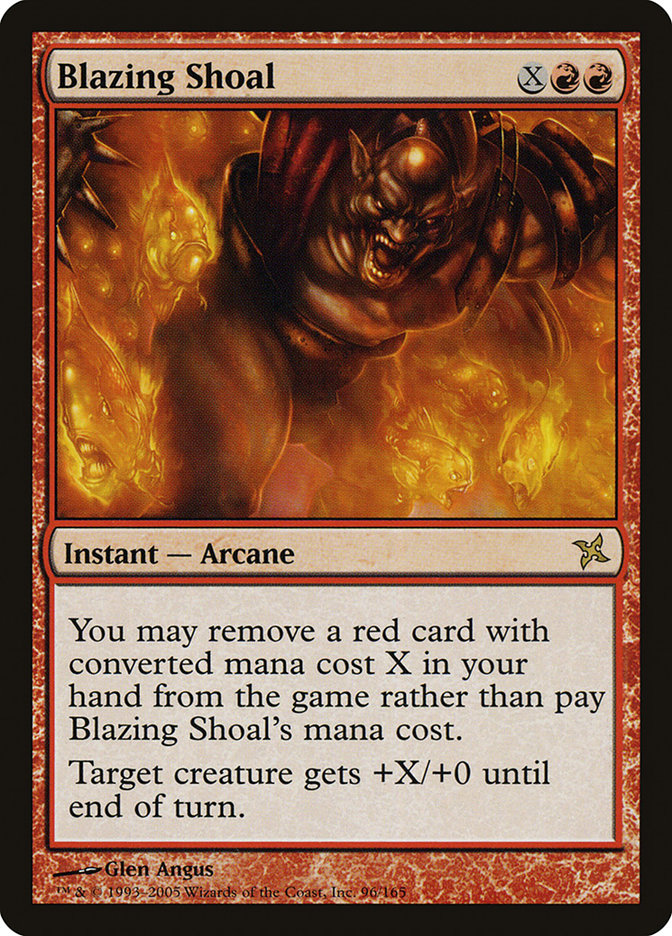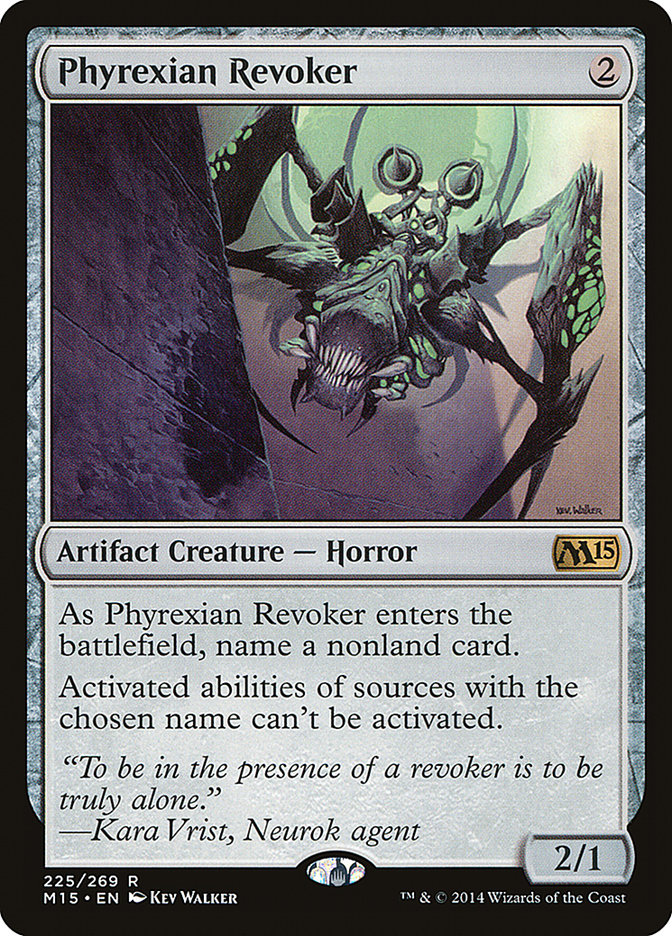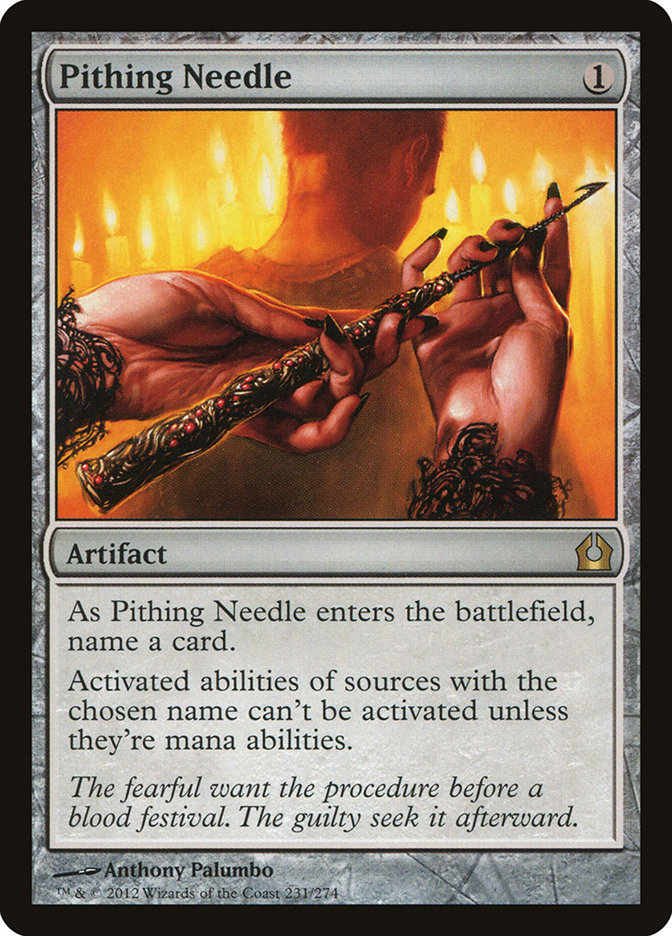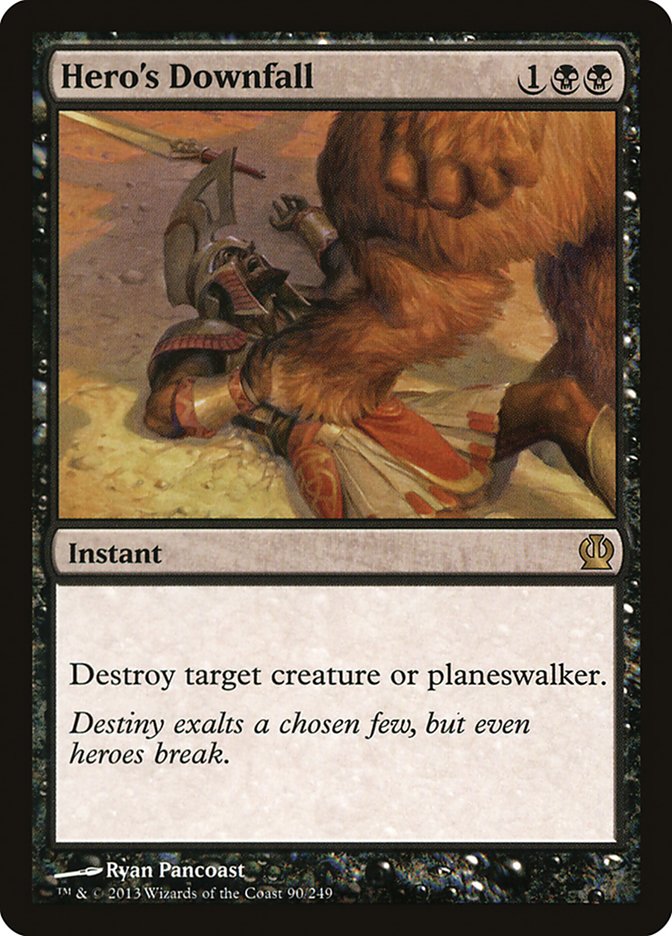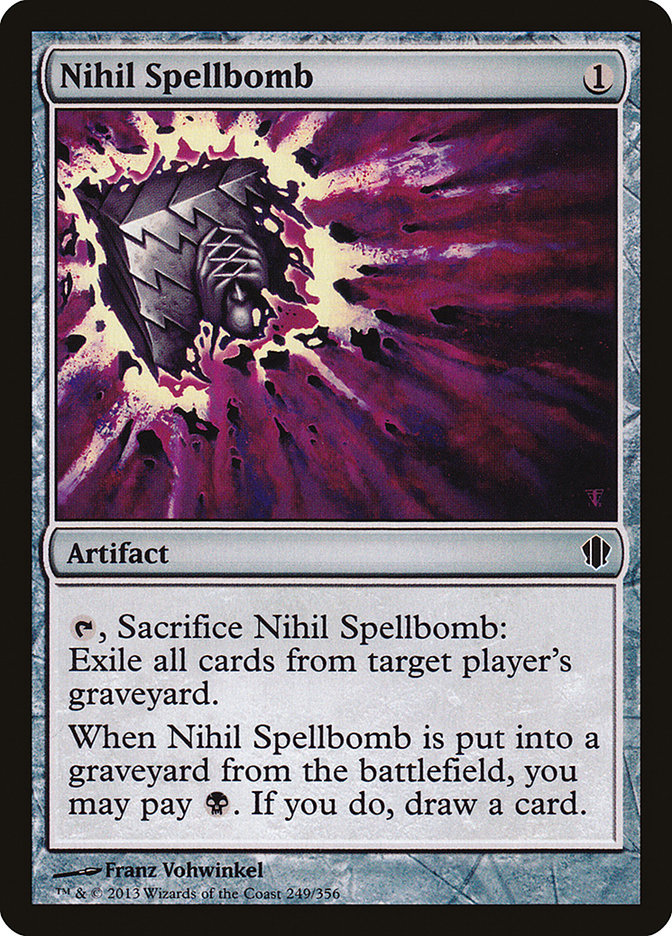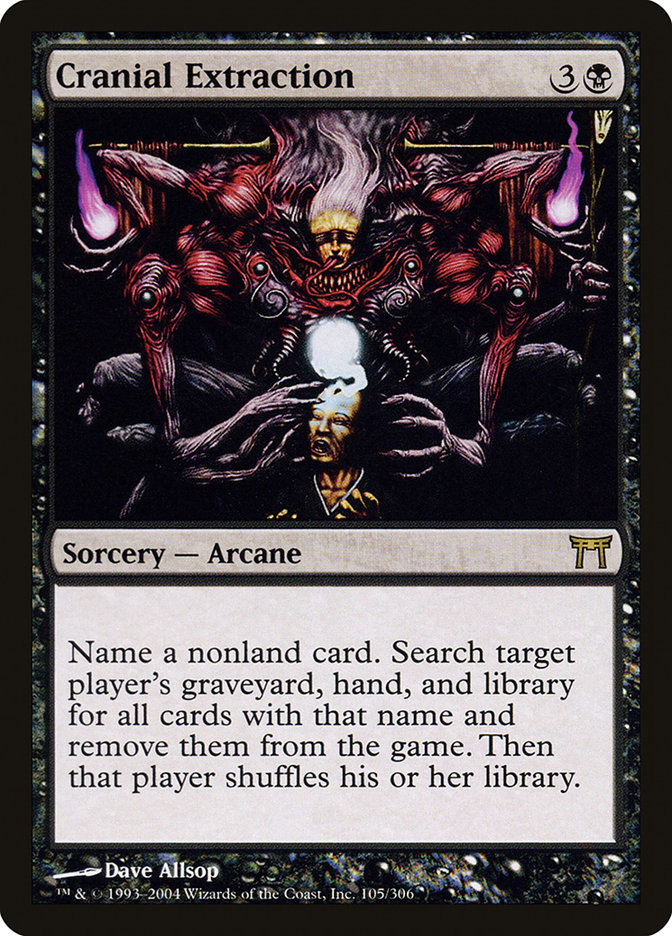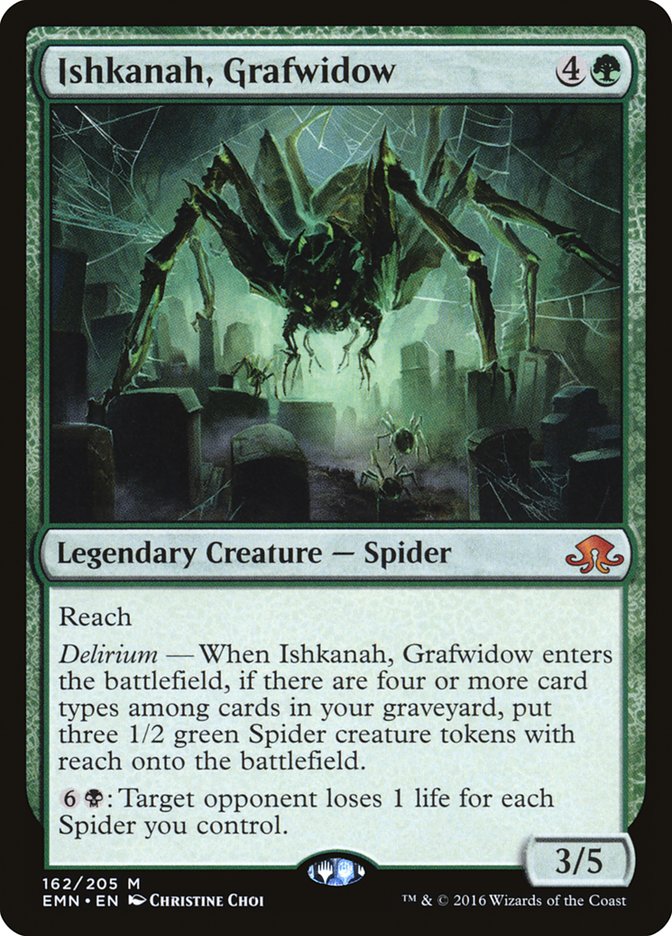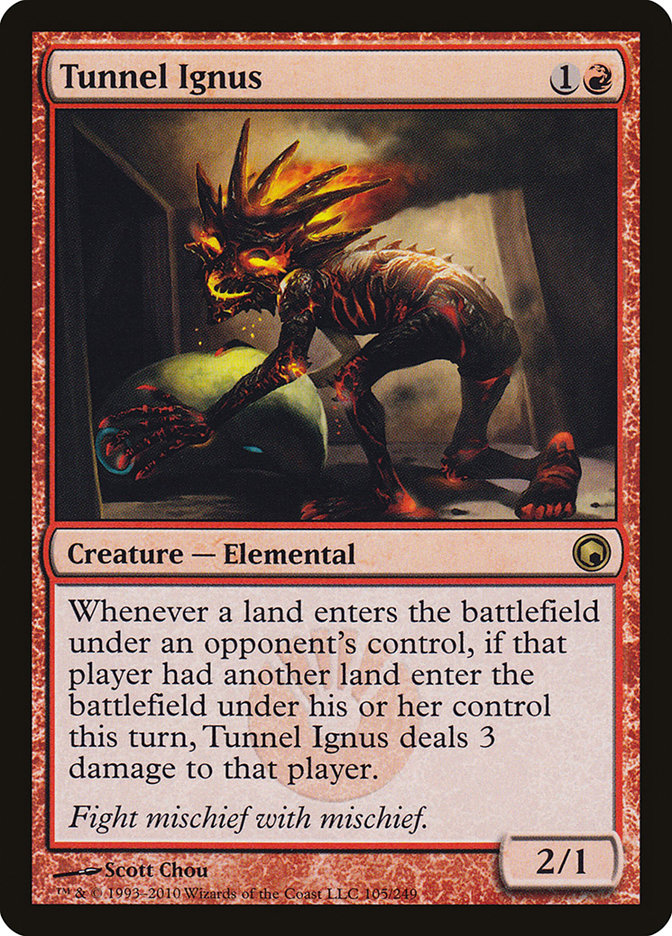Sitting down to write was originally going to be a daunting task. You wouldn’t think that to be the case with the #SCGPC just concluding, but my story there wasn’t that interesting. I got fairly lucky on Saturday…and quite unlucky on the following day.
Devoid of inspiration, I looked toward others, which was exactly what I found. Not only had Michael Majors written a truly thought-provoking article about the state of Standard this year, but it alone could explain why my experience at this year’s Players’ Championship was left without much to write home about. Today I’m going to dive a little deeper into Majors’ ideas, so please go read his article if you haven’t already.
Before we go too deep, I want to stress exactly why my Players’ Championship experience felt so lackluster. It should have been the best one yet given how much more effort StarCityGames put into making sure the players had a good time while in Roanoke. The competition was fierce, with many great talents and most of the largest personalities on the The SCG Tour. It should have been a tournament for the ages, but in the end, it just wasn’t.
You know why?
The games sucked.
Each game was more lackluster than the next. Either I was a huge favorite and smashed, or I was at a disadvantage and lost. Not once did I feel like I was playing a gritty game against another amazing player. Not once did a match come close to giving me that same feeling I got when I played against Reid Duke in the Semifinals of the first SCG Players’ Championship. Not once did I get that same emotional attachment I previously had for the Players’ Championship, which was why I tried so hard to qualify this year in the first place.
Lower Standards
Lackluster is a great way to describe Standard right now. With so many powerful cards, the games themselves have lost any sense of imagination. The play patterns that Michael Majors talked about in his article have become repetitive, but what’s worse is due to the high power level of permanents, some draws are nigh impossible to beat on the play.
“But those are the games you’re supposed to lose.”
That’s a phrase I’ve begun to use more often as the years go by when talking theory with my teammates. It was originally something I said to detract people from trying to answer everything, but as of late has evolved into explaining how Standard works. You just can’t win as many games as you used to be able to in this format. Obviously I don’t want to lose more games than I have to, but I thought it was better for the game overall if there was more variance infused into it. Powerful cards that are difficult to interact with keep getting printed.
It wasn’t until Majors’ article that I decided to reevaluate things.
Interaction Traction
Players around the World actually dislike the current Standard format, but they love Modern. That speaks volumes against the non-interactive appeal. We might have thought players enjoyed just casting their cards and winning the game without much push-back, but then they would have also raved about slamming Emrakul, the Promised End on turn 4 each and every game.
I now believe it’s actually the opposite. The reason why players enjoy Modern is because there are tools out there to dispatch any given strategy—even if that sometimes means that Wizards of the Coast has to step in and get rid of something heavily disliked through a ban.
Standard is missing something very crucial right now: any realistic form of interaction. Not the usual interaction we’ve become accustomed to, like situational counterspells or situational removal, but true “you lose” interaction. The kind that sits in our trade binders waiting for the perfect time to get sleeved up. Cards that might not do many things, but they do those things well.
These are just the tip of the iceberg of potential examples but are enough to get my point across. We just don’t have enough universal answers to the current threats that exist. You could say the current threats are unanswerable regardless of what we throw at them given Majors’ equation of “Overpowered + Cost Reduction = Just Give Up”, but I’m not about to throw in the towel just yet.
Answers are why we continue playing formats after the honeymoon phase is over. We all love preview season and get excited about all the new and degenerate things we are going to get to do with the new cards, but being able to answer strategies is what keeps us excited about continuing our journey in a format. Why show up and play with an inability to change things ourselves? After all, that’s one of the main draws to playing Magic in the first place!
Majors wrote that it might be possible that formats are getting solved too quickly due to our never-ending understanding of the game along with so many matches being played on The SCG Tour, Grand Prix, and Magic Online. I disagree with this. We simply don’t have the right answers to deal with such powerful cards or combinations of cards like Aetherworks Marvel and Emrakul, the Promised End. We very well may have solved Kaladesh Standard, but that isn’t an inherent flaw in our game; it’s a flaw in the way Wizards wanted the games to play out.
I’ve personally had some issues with the way the past couple years of sets looked, but until now, I’ve have held my breath on the matter. I did so because there’s a good chance they were all intentional, and I don’t have enough information to make a formulated assessment on the quality of work done on new sets, especially when I’m biased towards the quality of competitive Magic–the smallest demographic for the game. That said, I do have some opinions which are quite topical.
Lights, Camera, Interaction!
We’re going to start with a crazy conspiracy theory to why I believe we may have lost all interaction in Standard. I only bring it up because it’s so conspiracy-level crazy that we’ve lost all our interaction to begin with!
Not only do we have so many different types of threats like vehicles, planeswalkers, artifacts, and sticky creatures, but the answers for them don’t really cross over that much. At all really. Our interactive spells have become more limited and situational, but at the same time the threats have become more diverse and impactful. So what’s the deal, Wizards?
Well my crazy conspiracy theory is… they don’t want us to interact in Standard!
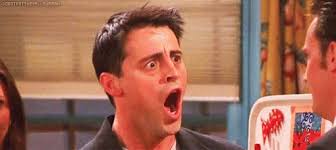
That’s right! Wizards has been slowly making changes to help Magic be more enjoyable to watch, the most current being their Team Series that will allow them to better brand Pro Players since we will now all be on six-player squads. Is it that difficult to believe these goals haven’t trickled down into the gameplay itself?
Maybe Wizards had the same misconception I did about Modern and Standard: They may have thought people liked less interaction, or maybe less interaction makes Magic more fun to watch. Seeing “Good Guy” Gideon come down on turn 4 and go full “Animal House” on his opponent. Not seeing hours upon hours of interactive Magic that bores the audience to sleep.
Pictured here: The savvy underdog.
That’s the only explanation for why there aren’t enough interactive cards being printed. The more interactive a format gets, the longer the games take to play, and thus the level of complexities to explain to an audience goes up. It’s much more exciting to watch two players bash each other out of existence, but only if those play patterns don’t become repetitive. If we continue to do the same things over and over again, we lose interest if we don’t have tools to try and stop it.
That’s where we are right now. We can’t stop it, but calling for a banning in Standard is much more ridiculous than one in Modern. Wizards most likely didn’t create this format for viewership at Pro Tours, but you sure can’t write it off with how limited the interaction is. Especially when this Standard format has some of the most powerful permanents we’ve seen in a very long time.
Color Pie Identity
Majors brought up a good point about how consistent it can be to play decks like B/G Delirium and Aetherworks Marvel. Both decks have access to one-mana green spells that add value to the deck while at the same time reduce the numbers of lands they have to play.
Both have Ishkanah, Grafwidow to bridge the gap for Emrakul, the Promised End. Both have a magnitude of alternate angles of attack to lessen the effects of targeted hate. Now I don’t believe these decks specifically are the issue, but they’re simply a product of how all the cards as a whole are being created.
We have a serious color identity issue happening in Magic right now, and I believe it all started when Wizards decided to reduce the power level of cheap instants and sorceries. Cards like Mana Leak, Doom Blade, Rampant Growth, Lightning Bolt, and Path to Exile are all described as “too good” now. They’ve been replaced with situational iterations of themselves that see little to no play. Even when they do see play, they are often used as a splash for colors that lack that ability.

This is what we have to work with now. Obviously the power level of these cards are much lower than their predecessors, but that power didn’t just disappear. It was redistributed into permanents. The same permanents we’ve played with many times over in recent years. My issue with that is some of these colors shouldn’t have permanents being their best cards all the time, but they do because their spells aren’t good enough.
The game has become very permanent-based as of late. With this brings many issues for certain colors. Red, for example, has lost the ability to compete in the format as a realistic color. How could the color under its old identity restrictions compete with so many good permanents? Sure the color has Chandra, Torch of Defiance and Harnessed Lightning, but not a creature in sight worth playing past Inventor’s Apprentice. The color also has to have a great way to kill Gideon, Ally of Zendikar, which it currently doesn’t. Thus red needs other colors to help win, making it solely a support color. Why? What does this accomplish?
You could say the power of vehicles helps red be competitive at times, but that shouldn’t be a necessity. Saying Smugglers Copter is too good not to play is just a product of the format, not of the card’s inherent power level.
While on topic, Gideon, Ally of Zendikar is the biggest proof of color identity issues in Magic. White for the longest time has had difficulty finding its own identity, which has caused Wizards to continuously print some disgustingly good planeswalker in the color to keep it good. Right now, that planeswalker is Gideon, Ally of Zendikar, one of the definitive cards to play; however, he’s always had the same pros and cons. At this point, he is boring to play with. He is boring to play against.
White has no personal identity when it comes to the functionality of cards. All of the cards outside of Gideon, Ally of Zendikar are decent but uninspiring. Most of them couldn’t even keep up in Standard without the threat of the almighty planeswalker spark.
We certainly don’t even need to get into blue! Cancel has become the best card in the color. Seriously. Cancel! Blue has even lost the ability to draw cards well! Not only is Cancel their best card type, but card draw in blue has become Inspiration!
Now let’s take a look at green. It lost all of its really strong ramp capabilities, but in turn, it gained a ton of true and virtual card advantage. For some reason, green became the color you can draw the most cards in, while beating down, and while continuing your game plan. Its creatures might not be the biggest of the bunch given the existence of vehicles, but they don’t have to be when Iskanah, Grafwidow can protect life totals.
In a different world, Iskanah, Grafwidow wouldn’t be the biggest issue, but right now the spells needed to compete with the format don’t exist. They are just too situational. Sure you can sideboard cards to help fight the Spider army, but every green mage has a slew of additional threats to bring in after sideboard to change things up.
Green is too good right now, but it’s not because it’s too good! The other colors just don’t have the tools to compete. Todd Anderson wanted to play U/R Control in Standard for the Players’ Championship, but he couldn’t even beat me playing Temur Aetherworks when he built his deck specifically to do so. I may not have activated many Aetherworks Marvels in our testing, but I made an absurd amount of Thopters with Whirler Virtuoso. He would counter many important spells, but didn’t have enough to stop everything, nor a fast enough clock to turn the corner before I drew something that stuck.
I would like to go back to a world where green is a ramp color and doesn’t have so much card advantage fused into its best cards. We’ve been in this realm for about three years now, and it just hasn’t led to a healthy distribution of playability in Standard. With this shift should bring the ability for other colors to “get under” green decks once more instead of running into removal or Sylvan Advocate-like threats.
A shift away from green’s current form should help each and every color in some way but does not mean they shouldn’t change as well. I would like to see red become more mischievous.
Now this card didn’t see much play, but the flavor behind it is what interests me: creatures that enter the battlefield with abilities that take away the advantages your opponents are trying to create. Maybe even just a red Spirit of the Labyrinth would do, but I want multiple different creatures taking away advantages. That alone might make a Red Sligh deck playable sometime in the future without needing to print disgustingly high power cards again, like Goblin Rabblemaster.
White feels like a lost cause, but we really need to find the solution to this color. It’s that, or the cycle of busted white planeswalker will never cease. Almost a year ago I presented a solution for white’s issue here, but the more I think about it, the more I believe white’s biggest issues are the other colors’ identity crises. White really has held true to its roots, but it’s the other colors that have been in constant shift.
Fixer Upper
Nothing’s going to change overnight, nor am I delusional enough to think these words will create any dramatically visible shift in the future of the game. Even when a Standard format feels as lacking as this one, it’s still fun to talk about, which is why I’ve never lost hope in our game no matter what. We will get through these cards together. Soon we will live in a wonderful world where we are spinning Aetherworks Marvel into Nicol Bolas instead of Emrakul. Doesn’t that sound like a world worth waiting for? It does to me!




